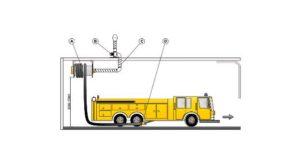Exhaust extraction systems for fire trucks and other emergency vehicles
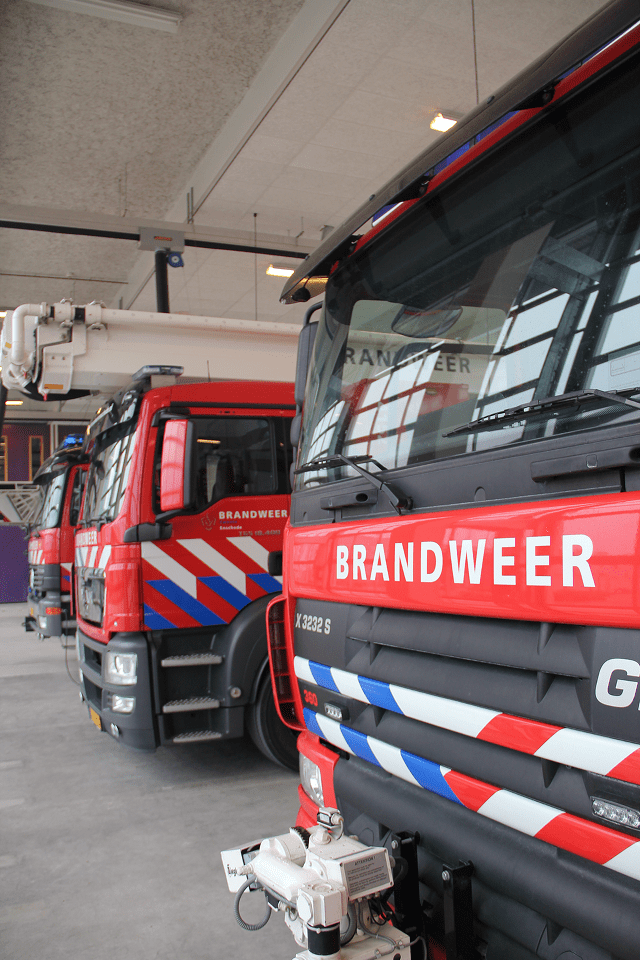
Especially fire trucks and other emergency vehicles with diesel engines have a high emission of pollutant inside the fire station. In case of emergency the respiratory rate of the fire men is increased as a result of stress and hurry, and in addition more oxygen more pollutants are inhaled, which increases the risk of cancer.
Our systems for exhaust extraction from fire trucks and emergency vehicles are an efficient solution to this. Different systems are recommended depending on the characteristics and the size of the fire trucks, the fire station etc.. Diesel engine emissions must always be captured at the exhaust pipe outlet. Exhaust gas extraction must work with negative pressure and equipment must be designed to capture exhaust gases at the source to the highest possible extend and must be extracted out of the fire station. To ease the use in case of emergency the extraction must come from above and it must be as close as possible to the exhaust pipe of the vehicle. An example of an efficient solution is an extraction system that automatically disconnects when the vehicle leaves the fire station.
Product Variations (**Please replace “x” with your desired hose length.)
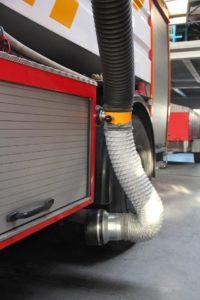
Extraction systems suitable for capturing the exhaust gases:
The electromagnetic attachment to the vehicle. An electromagnet holds the hose to the vehicle. The nozzle is in front of the exhaust and captures the exhaust gas. When moving out of the hall, the electromagnet is released at the end of the suction section and the emergency vehicle can drive out without stopping. When the vehicle returns, the exhaust gas extraction system is attached as the vehicle enters the hall and the exhaust gases will be captured again.
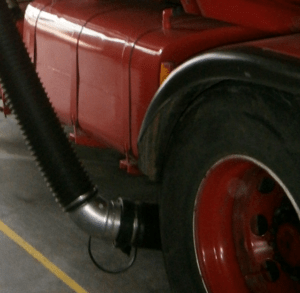
The pneumatic attachment to the vehicle. The nozzle will be pulled over the exhaust and inflated with compressed air. That works automatically via a compressed air hose integrated into the extraction system from the central compressed air supply or with a hand pump. When leaving the hall, the compressed air at the end of the suction section is emptied automatically and the emergency vehicle can drive out without stopping. When the vehicle returns, the exhaust gas extraction system is attached as the vehicle enters the hall and the exhaust gases will be captured again.
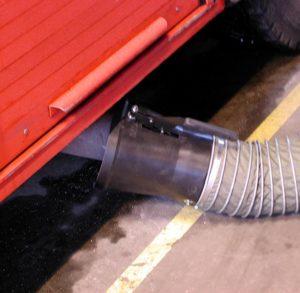
Another option is a mechanical system with clamping tongs which operates by means of a Bowden cable.
Contact us. We will be happy to help you.
Exhaust extraction systems for fire trucks and other emergency vehicles
Typical rideshare solutions for firetrucks and emergency vehicles
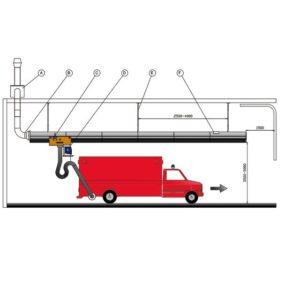
Channel duct with a detaching system
A: Fan
B: Pipe system
C: Magnetic, pneumatic, or mechanical detaching system
D: Spring balancer that ensures that the hose is not in the way
E: Suspension bracket
F: Detaching point
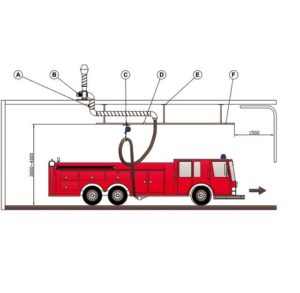
C-Profile system with central exhaust air connection
A: Pipe system
B: Fan
C: Spring balancer with a trolley in the rail system
D: Rail system. The system consists of 6m long pieces which can be added to the desired length
E: Suspension bracket
F: Detaching point
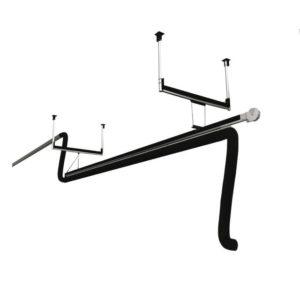
C-profile system as before, but with a horizontal hose in the C-profile rail
In this system a hose loop is avoided even with a long journey
A: Pipe system
B: Fan
C: Spring balancer or rubber band with carriage in the rail system
D: Rail system – consists of 6m long pieces which can be added to the desired length
E: Suspensions bracket
F: Detaching point
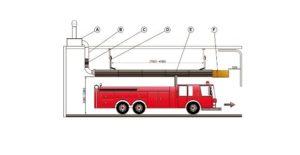
Vehicles with vertical exhaust
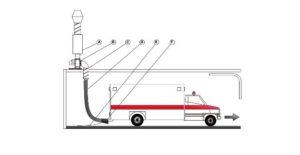
Single solutions with clamp or hood
